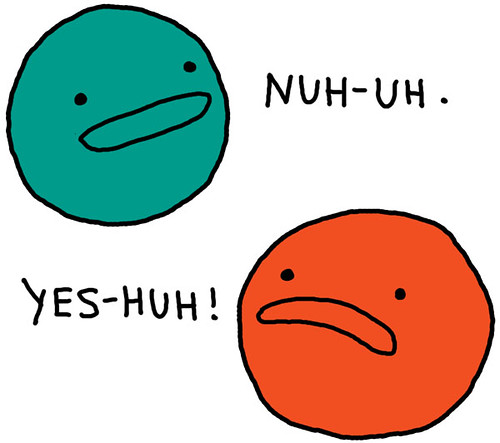Can Being Okay With Getting Little Stuff Wrong
Help Us Make Big Stuff Right?

What’s the difference in how we respond to car crashes versus plane crashes? We consider car crashes an unfortunate part of everyday life. It’s simply the cost of doing business. There’s an acceptable amount of loss when it comes to transportation on American streets—currently 40,000 people every year.
Meanwhile, a plane crash is considered a disaster. The number of acceptable plane crashes is zero. So every time it happens there is news coverage, a formal investigation, and changes to prevent it from ever happening again. In 2017 there were 44 deaths in commercial plane crashes.
Interestingly, the same issue happens in hospitals. The amazing Mike Mackert, my leader at the Center for Health Communication at UT, turned me on to a podcast about this very issue. On an episode of The Impact they explore how in hospitals, some harm is treated like a car crashes while other problems are treated like plane crashes—which results in drastically different outcomes for the patients.
Just a decade ago, hundreds of thousands of patients got central line infections every year while in treatment at hospitals. Unfortunate, but an acceptable risk for the benefit of being able to deliver life-saving drugs. Hospitals treated central line infections like car crashes.

Dr. Peter Pronovost changed the perception of central line infections from a car crash to a plane crash. Dr. Pronovost decided central line infections were unacceptable; each one would be investigated thoroughly, and new processes would be put into place, like gathering the tools for the procedure into one kit, and empowering nurses to speak up when they saw doctors not following the protocols. Dr. Pronovost got a ton of blowback from the entire hospital staff, who were unhappy with all the new work and changes. Around minute 13 of the podcast, he recounts an all-staff meeting at the hospital where the providers were furious, insisting this just wasn’t feasible. He responded: Is it our job to keep our patients safe? “Yes,” they responded. Then, said Dr. Pronovost, our egos aren’t going to get in the way of giving patients safe care.
(I promise, this will come around to improv.)
As someone who teaches medical communication skills all over Texas and beyond, I found this story fascinating. To me the question is this: Are we going to put our patients at risk, or our relationships at risk? What are the risks we can and can’t accept? In traditional medical environments, the culture says “we prefer the safety of our relationships and hierarchy to the safety of our patients.”
Dr. Provonost says, “The way we respond to mistakes as hospitals is as tragic as the mistakes that happened.” The mistakes are compounded by the failure to see them as plane crashes, to investigate and improve, and to properly empathize with the patients and their families.
When I am training medical professionals, I am asking them to take risks. They bristle at the idea of celebrating failure. It’s unthinkable to them. What I might need to get clearer about is which failures we should really consider unacceptable, like preventable patient harm. What I want to teach them is to say yes to a lot of things—difficult conversations, other people’s ideas, innovations, patient stories, and inter-professional communication. And say no to more important things, like deaths and injuries. So in a strange way, saying “Yes” to the little things can help you say “No” to bigger things. And taking risks on little things can create safety on bigger things. We can build strong relationships by accepting small risks, so we can withstand speaking up, improving processes, and creating more safety for all.
Strangely enough, there is a correlation for this principle in improv for the stage. We practice lots of acceptance. We make saying “Yes!” the default. When someone says no, they are blocking the scene.
For example, let’s imagine an improv scene starting like this:
Player A: Good morning, Monica! What coffee drink can I make you this morning?
A positive, playful, and experienced improviser might reply:
Player B: Hey there Pete! I’ll take your famous Mega Mocha. It’s gonna be a big day.
We can imagine how the scene might play out: Monica has an important job interview. Pete gives her advice that will help her ace it. Pete owns the company she’s interviewing with; he’s just a barista for fun!
Inexperienced improvisers might respond more negatively:
Player A: Good morning, Monica! What coffee drink can I make you this morning?
Player B: It’s not the morning! It’s the middle of the afternoon!
Player A: Well my watch says it’s 8am.
Player B: Your watch is broken! Look outside—the sun is high up in the sky!
Player A: It’s cloudy, Monica. We can’t see the sun.
Two people who don’t know each other bickering about the time of day doesn’t make for a very satisfying story. Whatever you block is what the scene becomes about. So we want to accept as much as possible at the beginning, build things together, and only say “No” when something important comes up (Pete offers to join Monica at her job interview). The more you can delay the “No,” the more impactful the story will be.

In improv we practice acceptance, but lately I’ve been drawn to the idea of resistance. What do I want to say “No” to? What are the big things that I think matter, and want to change? As many of you know, I lost my mother, Judi Merlin, to traffic violence in February of 2018. Before then I had never heard the phrase “traffic violence.” I just knew there were car accidents and sometimes bad things happened. Since her death, through involvement with Vision Zero, I’ve learned that many traffic deaths and injuries are preventable. It starts by thinking of deaths, like my mom’s, unacceptable. Vision Zero is a strategy to eliminate all traffic fatalities and severe injuries while increasing safe, healthy, equitable mobility for all. First implemented in Sweden in the 1990s, Vision Zero has proved successful across Europe—and now it’s gaining momentum in major American cities.
These changes are happening in our own part of the world. Austin is a Vision Zero city, with a goal of ending traffic deaths and serious injuries by 2025. I’ve started working with different local organizations to help make our streets safer for all our families. If you are interested in similar issues and getting involved, please let me know.
“Change the things you cannot accept.” It’s what my favorite shirt from Merlin Works Teacher Ted Rutherford’s Pushback Ink says. I’m a “Yes And” kind of person, but there are some things I will not accept. Not any more.

